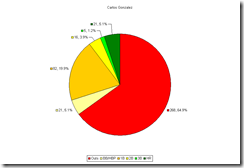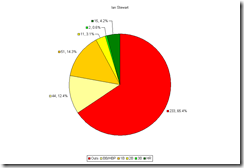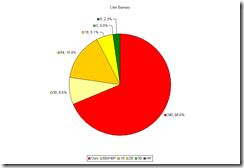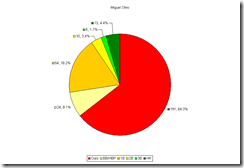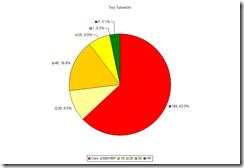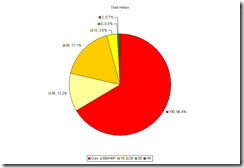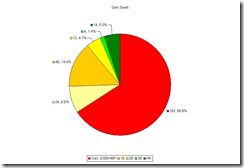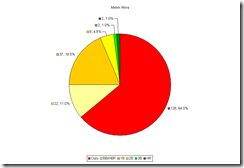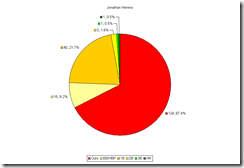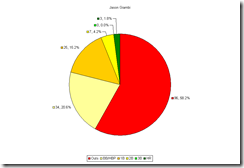Well, it’s been a while since I’ve written here. It’s been a goal of mine to write a post once in a while, and I’m finally doing it. Hopefully I will have time to write at least once a month from here on out.
One of the biggest questions every year for the Rockies, is whether or not Troy Tulowitzki will stay healthy. The optimist in me says it’s more likely that he stays on the field than most people expect, so I decided to take a closer look at Tulo’s injury possibilities.
When looking at injuries, there are four scenarios that could happen and have happened to Tulo in his career. The first is that he stays off the DL for the entire season. This occurred in 2007, 2009, and 2011. I’ve included 2011 in this category although he missed 14 out the last 19 games, since he was never out more than 6 in a row.
The second is that he has a body breakdown injury that lands him on the DL. This would include a pulled hamstring, hernia, or hip injury. This occurred in 2008, 2012, and 2014.
The third option is some kind of freak injury. Breaking your hand while slamming your hand against the wall, or getting hit with a pitch would fall into this category. This occurred in 2008, 2010, and 2013.
The fourth possibility is that both injury types occur. As you can see, this happened in 2008 when he had a hamstring pull, and hurt his hand when smashing his bat against a wall.
I have assumed that he can not be out more than once for the same injury category. Knock on wood that he won’t.
So, in eight full seasons he has had no DL time three times, a normal DL trip twice, a freak injury twice, and both types once.
When not on the disabled list, Troy has played 936 out of 1002 possible games. That would average out to 151 games per season, if he could avoid the DL. Then we could model games he will play as a binomial distribution where P = 936/1002, which is approximately .93. This also means that the probability he misses a game is approximately .07.
When Troy goes on the DL, the number of days out will follow a normal distribution. If the DL stint is a normal injury, it will have a mean of 74.3 games with a standard deviation of 28.3 games. A freak injury has a mean of 23.7 and standard deviation of 8.2. When both injury types occur, there is still a normal distribution. In this case, the mean of games on the DL will be sum of the two means and the variance will be the sum of the variances. So this will have a mean of 98 games and standard deviation of 29.4 games.
Because we have a distribution of games where he is automatically out because he is on the DL, it is easier to calculate the number of games out. In order to be out N games, we must calculate all of the ways he can be on the DL for a certain number of games, then miss the correct number of the remaining games to add up to N games. For example, to be out 100 games, he could be on the DL for 100 games and miss none of the remaining 62. He could also be on the DL for 99, and miss 1 of the remaining 63. This continues until the final possibility where he spends zero days on the DL, but sits for 100 games.
This can be written as:
This can be re-written in Sigma Notation as:
In a more general sense ,
Where POutN is the probability he is out for N games. PDLi is the probability he is on the DL for i games, based on a Normal Distribution. PN-i,162-i is the probability he is out N – i games out of 162 – 1 games remaining, outside of a DL stint.
Once the calculations are done for each scenario, I combined them according to the probability that each occurs. So 3 times no DL, 2 times DL type 1, 2 times DL type 2, and 1 times both DL types. Then I plotted the distribution versus the number of games that would be played to reveal the following:
This graph looks slightly like a normal distribution skewed to the left, but with several peaks and valleys. The peak at around 152 games, corresponds to the mode and indicates the most likely possibility. The mean of the distribution is 116 games, which is slightly less than his average of 120. The median of the distribution is approximately 130 games. If you are going to bet on this, the median is the key number. This indicates that the probability of playing 130 games or more is equal to to the probability of playing less. The calculations also show that the chance that Tulo plays 140 games or more, is about 40%. I’d like that to be higher, but it’s definitely not a long shot.
To give more perspective, I have also plotted the overall model with the model for all individual injury scenarios.
There is one other possibility we have with this, that is to ignore the freak injuries. In this case, there will be 3 out of 8 seasons with a DL stint and 5 out of 8 without. Doing so, gives us the following graph:
This has a similar shape, without the small increase around 130. The mean of this is 125 games. Even better, the median of this is 148 games. This indicates that freak injuries have impacted Tulo’s injury history significantly. If they don’t occur, Troy will play a high number of games. So there is reason to be optimistic, even if the first model happens and not the 2nd. Hopefully that is what happens. In either case, if you’re betting on the number of games Troy Tulowitzki will play, take the over.
![clip_image002[22] clip_image002[22]](http://lh4.ggpht.com/-S7dC3nLNhPg/VRivjeEikjI/AAAAAAAAAEc/jxVjCp-1NT8/clip_image00222_thumb.png?imgmax=800)
![clip_image002[15] clip_image002[15]](http://lh4.ggpht.com/-dUkW9ksuomM/VRivkKJLVHI/AAAAAAAAAEo/uxkHb_Thzaw/clip_image002%25255B15%25255D_thumb%25255B1%25255D.png?imgmax=800)










